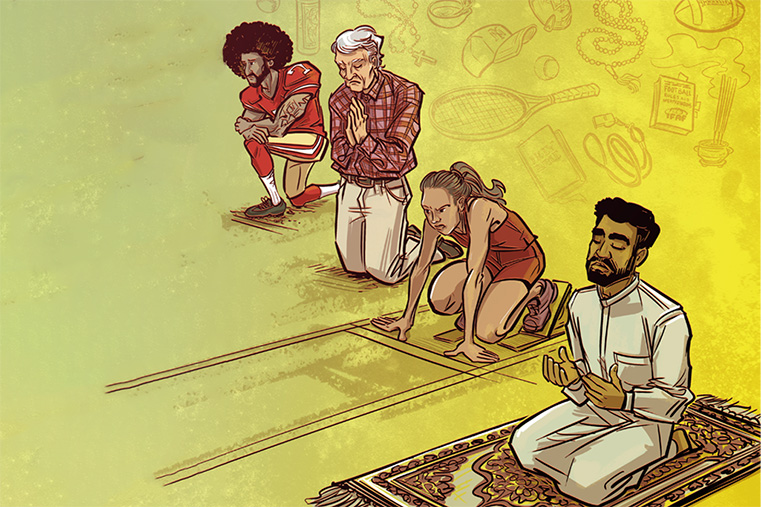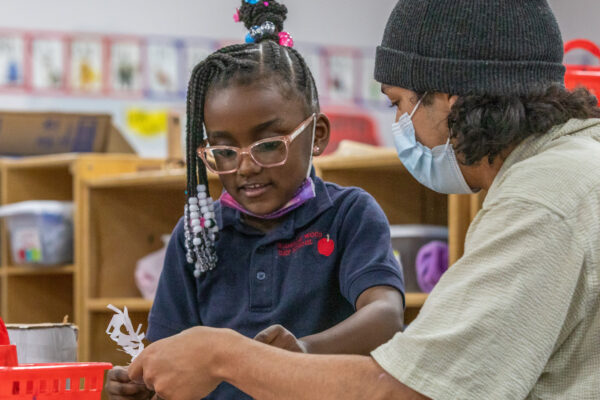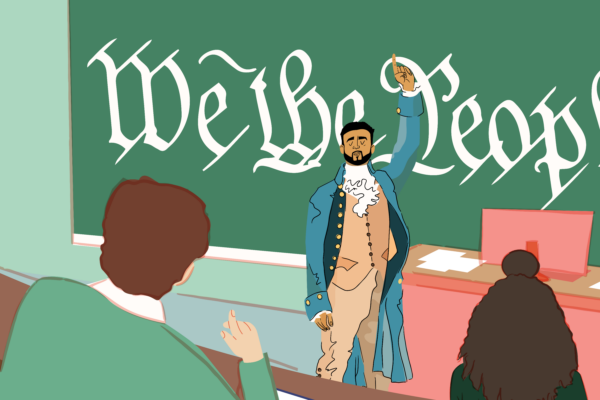Sports and religion are powerful forces in America.
For example, in the 1960s, Muhammad Ali used his fame as a boxer to talk about his faith, civil rights and his refusal to be drafted during the Vietnam War.
“I either have to obey the laws of the land or the laws of Allah,” said Ali, who was a member of the Nation of Islam. “I have nothing to lose by standing up for my beliefs. We’ve been in jail for four hundred years.”
In “The Politics of Play and Protest: Religion and Sports in America,” WashU students use religion and sports to examine American life, including social protests like Ali’s.

“Sport is where a lot of conversations about what we value as a society come to the fore,” says Cody Musselman, creator of the course and a postdoctoral research associate in the John C. Danforth Center on Religion and Politics. “It’s an opportunity for us to talk about greater social issues through the nexus of religion and sport.”
In America today, sports and religion share many similarities. “They both have ritual,” Musselman says. “They both have institutions that they follow. They both have fans or crowds and followers. There are sacred places, and people make pilgrimages.”
However, Americans haven’t always revered sport. In early U.S. history, Musselman says, sports were viewed as deviant activities that led people away from a focus on productivity and a pious life.
That belief evolved in the 19th century as the frontier battlefield disappeared and the Industrial Revolution expanded leisure time. Musselman says religious leaders began thinking of sport as a way to build a citizenry that was physically and morally fit. Musselman uses football as an example.
“Football was seen as a way of fortifying the nation,” she says. “There was the idea that you could help create the new American man through the game of football. This new and robust form of muscular Christianity reflected ideas about national identity formation and also of settler colonialism.”
To illustrate this point, Musselman tells her students about the football team at the Carlisle Indian Industrial School, a Pennsylvania boarding school for Native Americans founded in 1879. In the early 1900s, the school’s team of smaller-than-average players created new, innovative trick plays and defeated Ivy League powerhouses such as Harvard and Penn.
“But in doing so, they upset narratives of civilizational progress,” Musselman says, “and their success on the gridiron spurred new rules that favored the white American football players. Sport was (and is still) used to both justify and demonstrate a racial and class hierarchy whereby white Protestant men represent the pinnacle of civilization.”
Marginalized groups have long used sports to assimilate, she says, citing Catholics at the University of Notre Dame embracing football or, in a lesser known example, Jewish people playing baseball and managing baseball teams.
“We can look at sport as a place where people — athletes and fans — negotiate national belonging, as a way of showing their Americanness,” Musselman says.
This search for belonging encompasses race and gender.
“The example of Serena Williams [raised a Jehovah’s Witness] highlights the difficulties of being a Black woman athlete — even if you are far and away one of the greatest athletes in your sport of all time. Given her marginalized social position, she still struggled for recognition and belonging,” Musselman says. “We also raise Colin Kaepernick’s [NFL kneeling] protest, the success of transgender athlete Lia Thomas and the evangelism of Tim Tebow in our class as examples to assess how athletes mediate commercial, political and religious interests with their platforms.”
In addition, the course examines unexpected topics such as CrossFit, reality TV, sports marketing, pre-Columbian Indigenous sports and more.
“My goal is for students to see how relevant religion is to their everyday lives,” Musselman says. “And that doesn’t necessarily mean the practice of their own personal religion, but merely the fact that religious influence is everywhere.”



